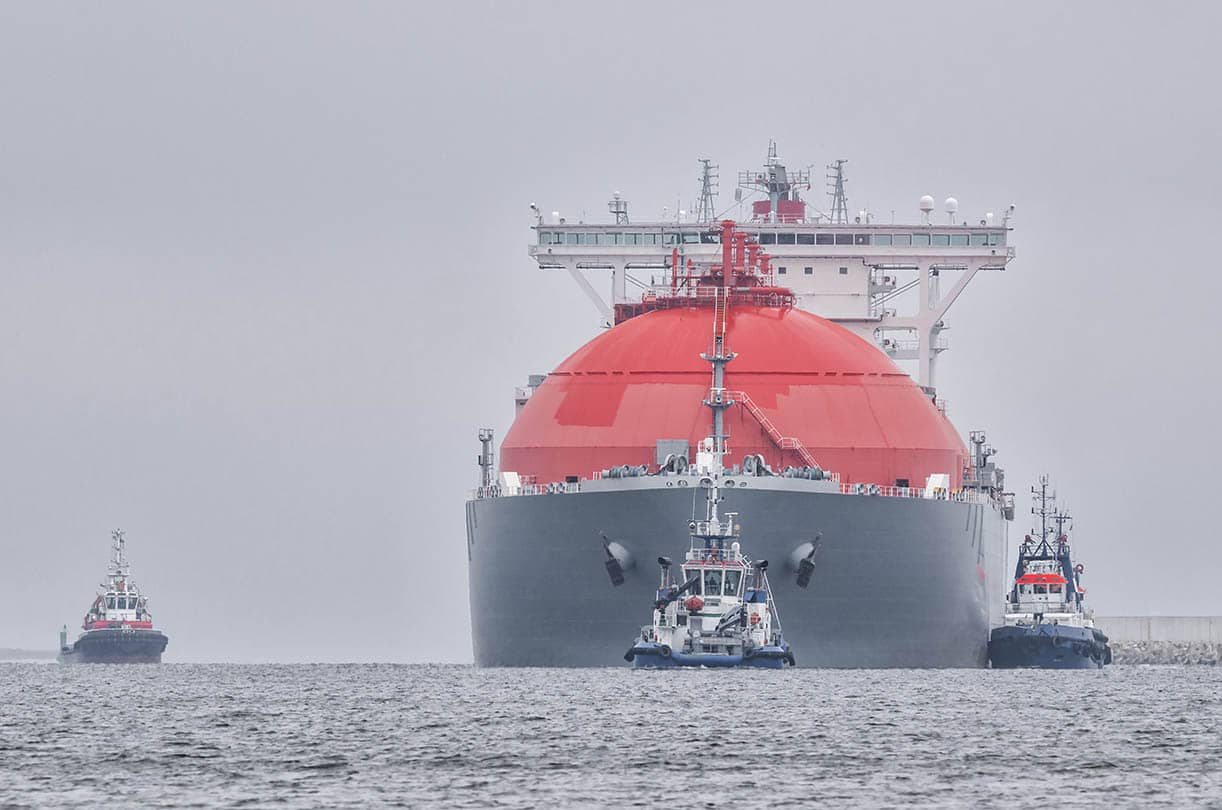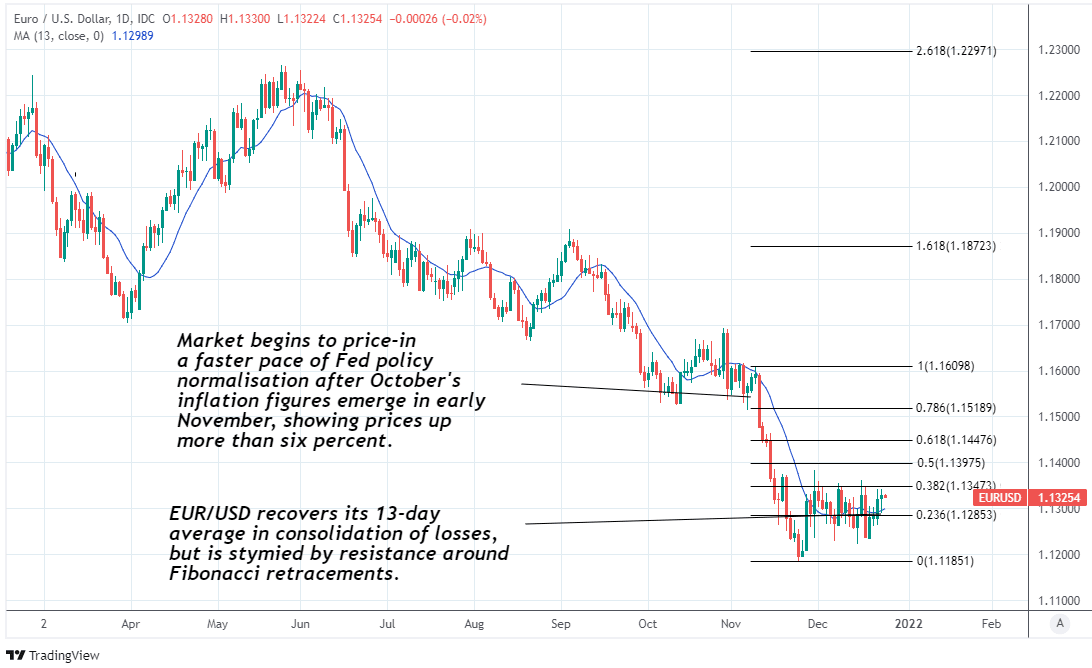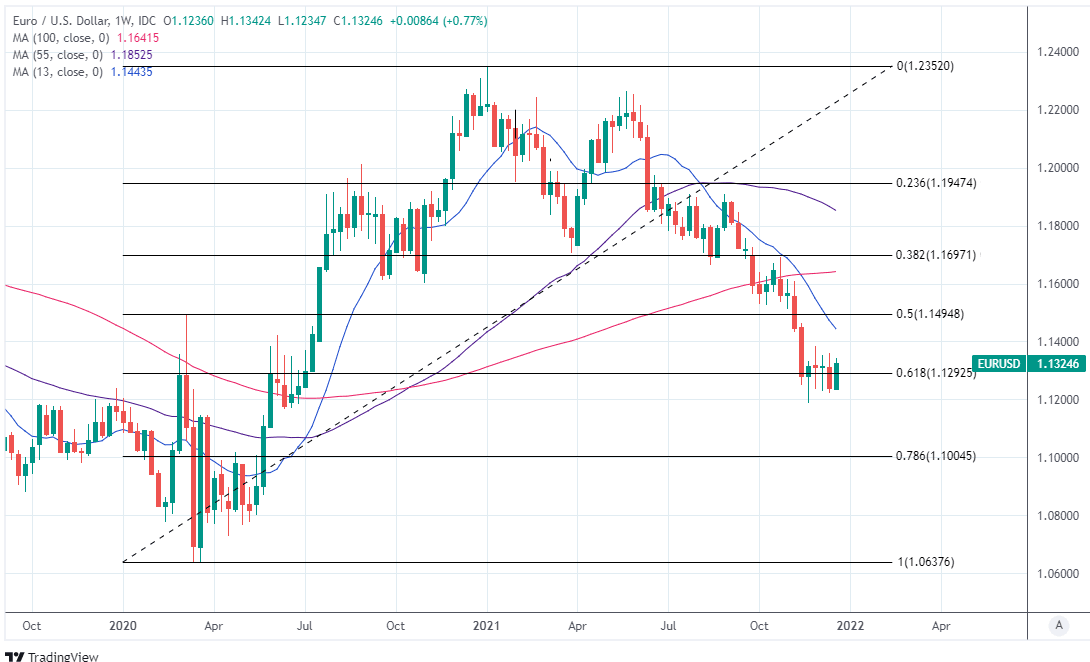Euro / Dollar Buoyed by LNG Flotilla and Omicron Optimism
- Written by: James Skinner
-
- EUR/USD back above 1.13 & resisting gravity
- Buoyed by virus studies & cooling gas prices
- More studies suggest new variant a mild one
- U.S. LNG set to douse European gas market
- EUR/USD support seen at 1.13 into new year
- ECB-Fed divergence lingers as EUR/USD risk

Image © Adobe Images
The Euro to Dollar rate climbed back above 1.13 on a rising global market tide ahead of the festive holiday after further studies suggested the newest strain of the coronavirus could be a mild one, while the single currency was also aided by a softening of European natural gas prices.
Europe’s single currency crept higher against other low-yielding currencies during the week to Friday and even outperformed some of those counterparts that would typically do better in any buoyant market for risk assets.
This was after a softening U.S. Dollar and double shot cocktail of favourable developments elsewhere helped to lift the Euro-Dollar rate steadily from Monday’ opening lows around 1.1230, to leave it trading above 1.13 ahead of the holiday break.
“Cautious optimism that Omicron is less severe than Delta is supporting risk assets. A trio of preliminary studies show the hospitalisation risk from the Omicron variant is far lower than with the Delta variant,” says Elias Haddad, a strategist at Commonwealth Bank of Australia.
Most notably for the Euro-Dollar rate a series of studies emerged on Thursday, this time from researchers in the UK, which appeared to confirm South African scientists’ earlier observations that the Omicron coronavirus strain could be a mild one.
Above: Euro-Dollar rate shown at daily intervals with 13-day moving-average and Fibonacci retracements of November decline indicating likely areas of technical resistance to a further rebound.
- EUR/USD reference rates at publication:
Spot: 1.1343 - High street bank rates (indicative band): 1.0946-1.1025
- Payment specialist rates (indicative band): 1.1240-1.1286
- Find out about specialist rates, here
- Set up an exchange rate alert, here
Studies carried out in England, Scotland, and South Africa have found the risk of hospitalisation to be between 15% and 80% lower with omicron than the delta variant, according to a British Medical Journal summary of the research.
This was a favourable sign for all countries and economies currently creaking under the weight of restrictions on social contact and business activities, some of which are in Europe, although falling natural gas prices were also cited by analysts as helping the Euro-Dollar rate on Thursday.
“EUR should trade in line with its peers for the remainder of the year while monetary policy divergence remains the core driver of weakness against the USD over the medium term. Dutch natural gas prices are down 20% today and are taking some weight off the EUR, however, as a number of US LNG ships are seemingly heading toward Europe to supplement declining gas shipments from Russia,” says Shaun Osborne, chief FX strategist at Scotiabank.
“The currency still looks supported by 1.13 and holding above it over the next few hours may see it aim for a re-test of the mid-figure resistance zone and eventual range breakout. The 1.1265 area is the next support under 1.13,” Osborne and colleagues said in a note on Thursday.
Some reports suggested there were as many as 30 tankers on route to Europe from the U.S. carrying liquefied natural gas after continental prices topped those seen in all other parts of the world, dampening prices on the continent in the process.
{wbamp-hide start}
{wbamp-hide end}{wbamp-show start}{wbamp-show end}
“We recall that in the beginning of the gas crisis earlier this year it was the other way around. However, it remains to be seen how much these unexpected LNG shipments will alleviate the shortages in the continent,” says Bas van Geffen, a senior macro strategist at Rabobank.
“Gazprom maintains that it is meeting all of its obligations, and Russia denies that the limited supply is connected to these geopolitical issues. The minimal exports could be related to the freezing temperatures in Moscow, but the timing will certainly raise a few eyebrows,” van Geffen also said.
Although all countries have experienced sharp increases in energy costs this year, with U.S. oil prices up more than 50% and some natural gas prices for future delivery up nearly 500% in 2021, Europe and the UK are widely seen as being at particular risk from rising prices.
It’s not yet known however, if natural gas shipments from the U.S. will keep on coming or if their dampening impact on prices would be sustained.
“In view of various developments this year, we look for the EUR's 'energy security risk premium' to persist. We think Europe's energy transition and relatively high input costs will act as drags on domestic growth, industrial profit margins, and Euro Area's competitiveness (particularly vs Asia),” says Stephen Gallo, European head of FX strategy at BMO Capital Markets.
Above: Euro-Dollar rate shown at weekly intervals with Fibonacci retracements of 2020 recovery indicating likely areas of technical support.
Secure a retail exchange rate that is between 3-5% stronger than offered by leading banks, learn more.
“Our baseline assumption is for EURUSD to be dragged moderately lower during H1 2022, with rate differentials underpinning the USD as the Fed edges towards lift-off while the ECB continues down the QE path. Our 3M and 12M calls are 1.10 and 1.13, respectively,” Gallo and colleagues said in a December review of BMO’s Euro forecasts.
While economic headwinds stemming from higher energy costs have had a stifling impact on the Euro, it was the divergence between monetary policies of the European Central Bank (ECB) and Federal Reserve (Fed) that drove much of the Euro-Dollar rate’s -7.14% decline during the 2021 year to Friday.
This divergence has also been widely cited by many analysts as the dominant reason for expectations of further Euro-Dollar declines during the course of next year, while December’s policy updates from both central banks did little to shift the market’s bearish views.
“The main source of uncertainty (and upside risk) to our EUR call is the unknown extent of investors' appetite for risk. As much as we favor EUR-funded 'carry' trades in 2022, we admit that instances of severe 'risk-off' in global markets will initially squeeze out EUR short positions, and provide support to the currency by pulling rate hike expectations out of non-EUR yield curves. A reversal in energy prices would also lend support,” BMO’s Gallo warns.
The Fed’s policy decision accelerated the winding down of the bank’s quantitative easing programme so that it ends in March 2022 rather than in June and came with economic forecasts that showed a majority of Federal Open Market Committee members viewing themselves aw themselves in December as being likely to vote for three increases in the Fed Funds interest rate next year.
Meanwhile, and although the European Central Bank set out a plan to end its €1.85 trillion Pandemic Emergency Purchase Programme in March and steadily return during the months to October 2022 to its pre-pandemic pace of purchases under the bank’s original Asset Purchase Programme, Frankfurt continued to discourage the market from anticipating any changes to its interest rate in the immediately foreseeable future.







